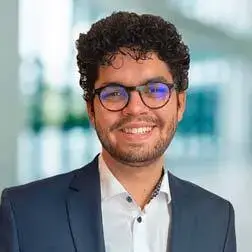
BSI standards 200-1 to 200-4: Checklist for companies

The Federal Office for Information Security (BSI) is the central cyber security authority in Germany. The BSI standards 200-1 to 200-4 form the basis for holistic IT security management in companies. In this blog article, we will take a closer look at these BSI standards to understand what they are and how they can help companies improve their IT security.
BSI Standard 200-1: Basic Protection
BSI Standard 200-1, also known as "Basic Protection", is the best known of the BSI standards. It is a framework for IT security based on a risk management approach that helps companies implement the IT security measures that are relevant to them. The standard covers various measures such as network segmentation, access controls, backup strategies and encryption technologies.
BSI Standard 200-2: IT-Grundschutz Profile
BSI Standard 200-2, also known as the "IT-Grundschutz Profile," is a guide for companies to determine their individual IT security needs and implement the appropriate measures. The standard assumes that every company has different IT security requirements and therefore needs an individual basic IT protection profile. The basic IT protection profile is created based on an analysis of the business processes and the associated IT systems.
BSI Standard 200-3: Risk analysis based on IT-Grundschutz
BSI Standard 200-3 is a guide for companies to perform a risk analysis based on the IT-Grundschutz profile. The standard helps companies identify and assess potential threats and risks. Based on the risk analysis, the necessary measures to protect IT systems can then be implemented.
BSI Standard 200-4: Emergency management
BSI Standard 200-4, also known as "Emergency Management," is a guide for companies to prepare for and respond appropriately to potential IT emergencies. The standard describes how companies can create an emergency concept, how they can ensure the continuity of their business processes and how they can minimize the impact of an IT emergency.
Conclusion
BSI standards 200-1 to 200-4 are an important resource for companies to improve their IT security. They provide a holistic approach to IT security management and help organizations identify and mitigate potential threats and risks. By implementing the BSI standards, companies can protect their IT systems and data and prepare for potential IT emergencies.


